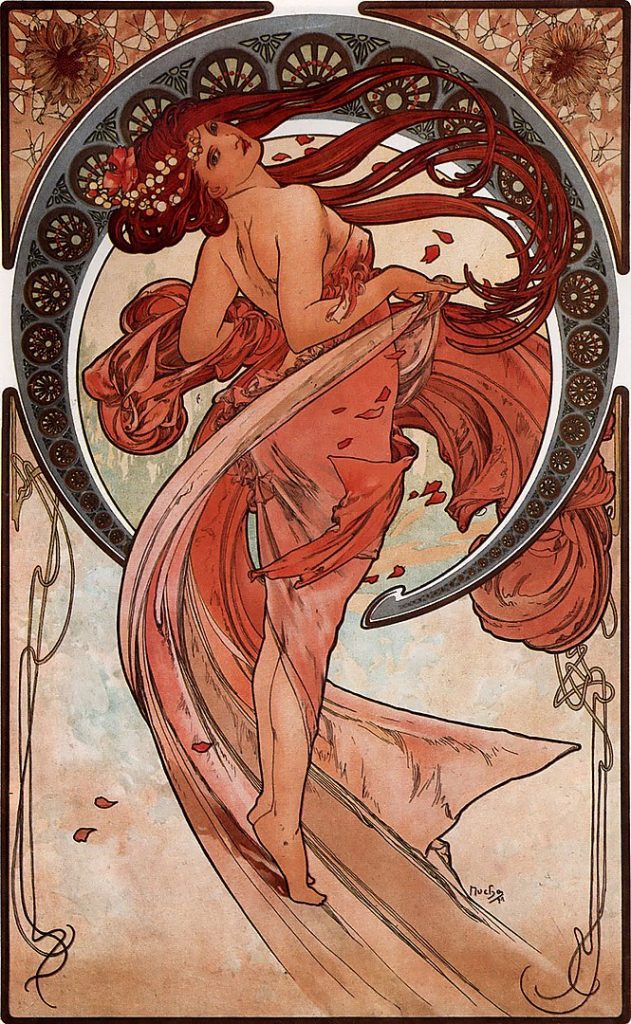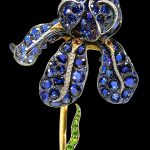
Art Nouveau, or “New Art,” was a revolutionary artistic movement that flourished between 1890 and 1910, with its peak during the turn of the 20th century. Born from a desire to escape the rigid conventions of academic art and embrace modernity, it emphasized a harmonious relationship between art, nature, and life. Unlike many styles that focused on singular disciplines, Art Nouveau aimed to integrate beauty into every aspect of existence, from monumental architecture to the smallest household objects. Known by different names across the world, such as Jugendstil in Germany and Modernismo in Spain, it reflected regional nuances while maintaining a shared philosophy of elegance and organic design.
Origins and Influences
Arts and Crafts Movement
The Arts and Crafts Movement, established by William Morris in the mid-19th century, served as a critical precursor to Art Nouveau. Both movements rejected the dehumanizing effects of industrial mass production, celebrating the value of craftsmanship and individual artistry. While Arts and Crafts looked backward to medieval and folk traditions, Art Nouveau embraced the future, experimenting with modern materials like cast iron, glass, and steel to craft objects that were both functional and beautiful.
Nature and Botanical Studies
Nature was not just a source of inspiration for Art Nouveau but its very essence. The movement drew heavily on detailed studies of plants, flowers, and animals, using their organic shapes and patterns as templates for design. Advances in botanical sciences and microscopic imagery allowed artists to incorporate intricate natural details into their work, from the veins of a leaf to the delicate structure of an insect’s wings.
Japonisme
The Western fascination with Japanese art, known as Japonisme, significantly influenced Art Nouveau’s aesthetics. Japanese ukiyo-e woodblock prints, particularly those of Hokusai and Hiroshige, introduced European artists to asymmetrical compositions, bold outlines, and flat planes of color. These elements became hallmarks of Art Nouveau, seen in works like Alphonse Mucha’s iconic posters, which combine flowing lines with nature-inspired borders reminiscent of Japanese scrolls.
Industrial Revolution
The Industrial Revolution provided both a challenge and an opportunity for Art Nouveau. While mass production threatened to diminish artistic quality, the era’s technological advancements enabled new forms of creative expression. Artists and architects like Hector Guimard utilized industrial materials such as wrought iron and glass to craft structures that were not only functional but visually stunning, as exemplified by the Paris Métro entrances.
Characteristics of Art Nouveau
Design Principles
Art Nouveau is defined by its flowing lines, dynamic curves, and a sense of movement that mimics the rhythms of the natural world. Known as “whiplash curves,” these sinuous lines appear in everything from iron railings to poster designs, creating a cohesive visual identity across disciplines. This emphasis on fluidity and asymmetry gave Art Nouveau a sense of vitality and spontaneity, setting it apart from the rigid geometries of previous styles.
Common Motifs
Recurring motifs in Art Nouveau reflect its deep connection to the natural world and symbolic imagery. Flowers like irises, orchids, and lotuses were popular for their elegance and association with purity. Animals such as dragonflies, peacocks, and swans were frequently depicted, often with a stylized or mythical quality that blurred the line between realism and fantasy.
Materials and Techniques
Art Nouveau artists embraced the possibilities of modern materials while maintaining a commitment to traditional craftsmanship. Wrought iron was transformed into intricate, vine-like patterns, while stained glass brought vibrant color and light into homes and public spaces. Lithography, a relatively new printing technique, allowed for the mass production of posters that retained the artistic integrity of hand-drawn designs, making Art Nouveau accessible to a broader audience.
Regional Variations
France
France became a central hub for Art Nouveau, particularly in Paris and Nancy. The École de Nancy, led by artists like Émile Gallé, specialized in nature-inspired decorative arts, including glassware and furniture. In Paris, Hector Guimard revolutionized urban design with his iconic Métro entrances (1899–1904), which seamlessly blended function and beauty.
Belgium
Belgium played a pioneering role in the development of Art Nouveau, with Victor Horta at the forefront of its architectural innovations. His Hôtel Tassel (1893) in Brussels is widely regarded as the first true Art Nouveau building, featuring open floor plans and flowing ironwork that blurred the boundaries between structure and decoration. Belgian designers like Henry van de Velde also contributed to the movement through furniture and interior design.
Austria
Austria’s Art Nouveau movement, known as Sezessionstil, was characterized by a more geometric and abstract approach. The Vienna Secession, founded in 1897 by artists like Gustav Klimt and Otto Wagner, sought to create a modern style unbound by historical precedent. Klimt’s gilded paintings, such as The Kiss (1907–1908), combined Art Nouveau’s decorative richness with deep symbolic meaning, making them some of the era’s most iconic works.
Germany
In Germany, Jugendstil developed as a distinctly graphic-focused branch of Art Nouveau. Artists like Otto Eckmann created bold, nature-inspired illustrations that influenced both visual art and typography. This focus on graphic design extended to magazines like Jugend (established in 1896), which became a platform for showcasing the movement’s ideals.
Spain
Modernismo, the Spanish interpretation of Art Nouveau, reached its zenith under the visionary architect Antoni Gaudí. His designs, such as Casa Batlló (1904–1906) and Park Güell (1900–1914), are characterized by their organic forms, vibrant colors, and inventive use of materials. Gaudí’s work represents the most fantastical iteration of Art Nouveau, merging Gothic influences with nature-inspired whimsy.
Notable Figures
Architects
Architects were central to the Art Nouveau movement, creating structures that embodied its ideals of harmony and innovation. Victor Horta’s buildings in Brussels, such as the Maison du Peuple (1899), utilized materials like iron and glass in unprecedented ways. Meanwhile, Antoni Gaudí’s Sagrada Família (begun in 1882, though ongoing) remains one of the most ambitious and enduring examples of Art Nouveau’s architectural potential.
Artists
Art Nouveau’s visual artists captured the movement’s elegance and fluidity in their work. Alphonse Mucha’s posters, such as Gismonda (1894), set the standard for lithographic advertising with their idealized women and floral motifs. In Austria, Gustav Klimt infused his paintings with symbolic and decorative elements, creating masterpieces like The Tree of Life (1905–1909).
Designers
Art Nouveau’s emphasis on everyday beauty extended to designers of jewelry, glass, and furniture. Louis Comfort Tiffany, an American innovator, transformed stained glass into an art form with creations like Tiffany lamps (circa 1895–1920). René Lalique, a French jeweler, blended enameling, glasswork, and gemstones to craft nature-inspired pieces that remain celebrated today.
Art Forms and Applications
Architecture
Art Nouveau architecture sought to harmonize form and function, making every element of a building an artistic statement. Structures like Horta’s Hôtel Tassel and Gaudí’s Casa Milà (1905–1910) exemplify this integration, with their flowing lines, intricate ironwork, and innovative layouts.
Decorative Arts
From glassware to furniture, the decorative arts were transformed by Art Nouveau’s philosophy of elegance in utility. Émile Gallé’s glass vases, often inspired by botanical themes, demonstrate the movement’s commitment to blending beauty with craftsmanship.
Decline and Legacy
Decline
Art Nouveau began to wane after 1910, as its intricate designs proved costly to produce and new movements like Art Deco (1920s) and Bauhaus favored simpler, more functional aesthetics. World War I further disrupted the artisanal traditions that had supported the movement.
Legacy
Despite its decline, Art Nouveau experienced a revival in the 1960s–1970s, influencing graphic design, luxury branding, and urban architecture. Its emphasis on integrating art into life continues to inspire contemporary designers, ensuring its lasting impact.
Key Examples and Case Studies
Posters
Alphonse Mucha’s The Seasons (1896) series depicts allegorical figures surrounded by natural motifs, showcasing Art Nouveau’s signature elegance and symbolism. Each panel reflects a season’s mood through color, posture, and flora.
Jewelry
René Lalique’s Dragonfly Brooch (1897) combines gold, enamel, and gemstones in a design that captures the delicacy of nature while pushing the boundaries of jewelry craftsmanship.
Architecture
Gaudí’s Casa Batlló (1904–1906) is a masterpiece of Modernismo, with its undulating façade, vibrant mosaics, and organic interiors that resemble underwater landscapes.
Conclusion
Art Nouveau remains a testament to the transformative power of art in everyday life. By uniting beauty, craftsmanship, and modernity, it bridged the gap between traditional and contemporary aesthetics. Its influence endures in architecture, design, and even popular culture, affirming its place as one of the most innovative movements in art history.




